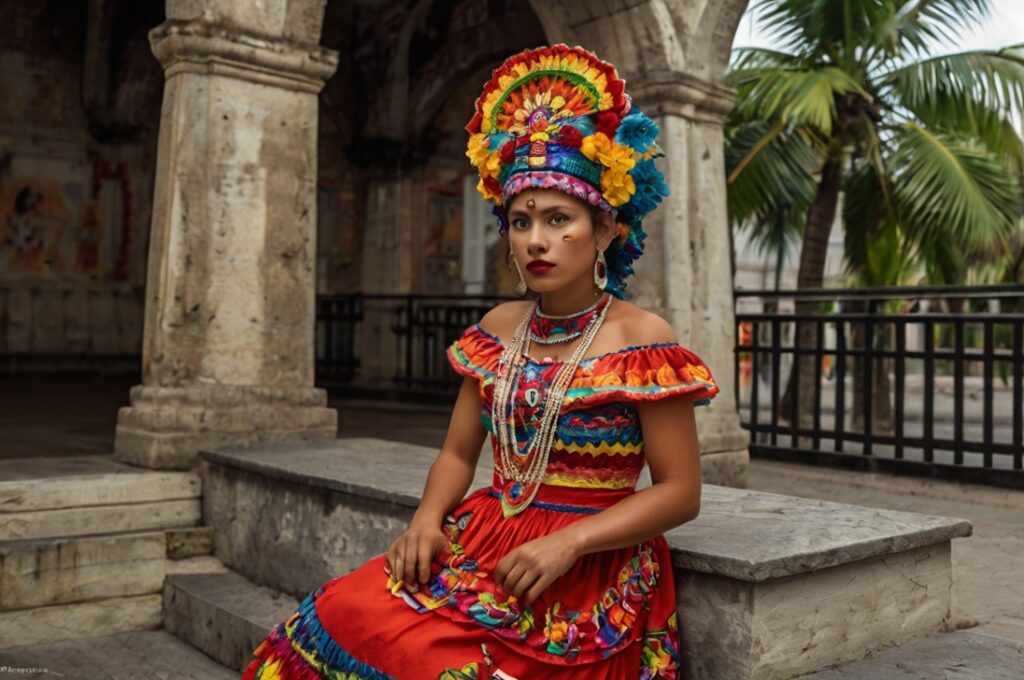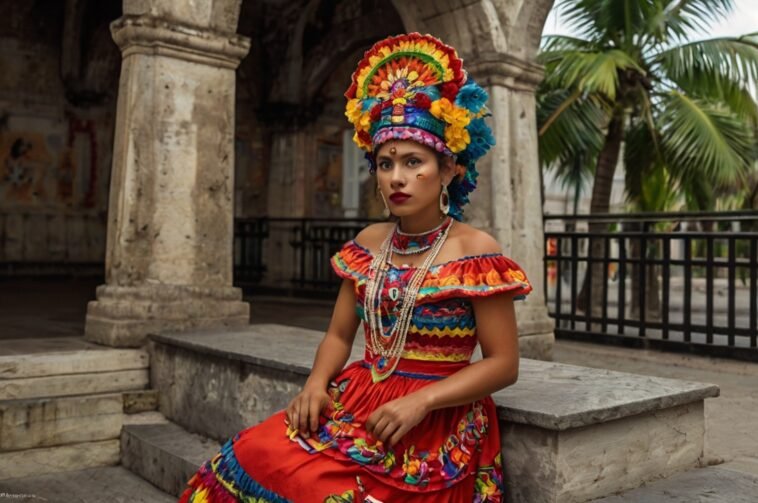
Veracruz, a vibrant state on Mexico’s eastern coast, is a cultural melting pot where Indigenous, Spanish, and African influences blend to create a unique and colorful heritage.
From the enchanting music of the Son Jarocho to traditional dances, flavorful cuisine, and soulful festivals, Veracruz offers an immersive experience that reflects the heart and soul of Mexican culture.
In this article, we’ll explore the cultural essence of Veracruz and how its traditions continue to capture the hearts of locals and visitors alike.
Historical Significance
Veracruz’s history is as rich and varied as its culture.
The region’s story began long before Spanish explorers arrived, with Indigenous groups like the Totonacs, Huastecs, and Olmecs calling it home.
Archaeological sites such as El Tajín and Cempoala offer glimpses into these ancient civilizations.
When Spanish conquistadors, led by Hernán Cortés, arrived in 1519, they established the port of Veracruz, marking the beginning of Mexico’s colonial period.
This port became a significant gateway for the Spanish to bring African slaves, European goods, and other cultural influences into Mexico, making it one of the most historically significant states in the country.
Music of Veracruz
One of Veracruz’s most well-known contributions to Mexican culture is its music, particularly the Son Jarocho genre.
Son Jarocho, which combines Spanish, Indigenous, and African rhythms, is recognizable by its lively tempo and use of traditional instruments like the jarana (a small guitar), requinto, and arpa jarocha (a harp).
The classic song “La Bamba,” which originated in Veracruz, is a beloved example of Son Jarocho.
Music here is not just for listening — it’s a way of life, celebrated in both small towns and large cities, where musicians gather in plazas to perform and invite passersby to join in the dancing.

Dance Traditions
In Veracruz, music and dance go hand in hand.
The most iconic dance of the region, the zapateado, features rhythmic foot-stomping that pairs beautifully with Son Jarocho music.
The zapateado has origins in flamenco and was influenced by the African rhythms brought by enslaved people during the colonial era.
Dancers wear traditional white clothing, with men donning white guayaberas and women in wide, flowing skirts adorned with lace.
Festivals across Veracruz often feature these traditional dances, and visitors are welcomed to participate, making it an experience that is both interactive and immersive.
Culinary Heritage
The cuisine of Veracruz is a rich fusion of Indigenous, Spanish, and Afro-Caribbean flavors.
Seafood is a staple due to Veracruz’s coastal location, and dishes like huachinango a la veracruzana (red snapper cooked in a sauce of tomatoes, olives, and capers) showcase these influences.
Arroz a la tumbada, a seafood rice dish, is also popular along the coast.
Street food in Veracruz is a delight, with treats like tamales veracruzanos, filled with corn masa, meats, and spices, wrapped in banana leaves.
Veracruz is also known for its café lechero, a sweet coffee with milk that is traditionally served in cafes throughout the city.
Visitors can enjoy this classic coffee in historical cafes, like Gran Café de la Parroquia in the port city of Veracruz, which has been serving locals since the 19th century.
Festivals and Celebrations
Veracruz is a land of celebrations, with vibrant festivals that draw visitors from around the world.
The most famous of these is Carnaval de Veracruz, a week-long celebration that takes place every February.
This lively event features parades, dances, costumes, and music, and it’s considered one of the most important carnivals in Mexico.
Originating from European traditions, the Carnaval de Veracruz has been shaped by Afro-Caribbean influences, making it a unique blend of cultural expressions.
Another major festival is the Día de los Muertos (Day of the Dead), celebrated with traditional altars honoring deceased loved ones.
In Veracruz, this holiday is marked by the addition of Afro-Mexican influences, such as folk music and dance, particularly in areas with strong African heritage.

Visual Arts and Crafts
Veracruz is also known for its vibrant arts and crafts. Artisans create beautiful hand-woven textiles, pottery, and woodwork.
The town of Papantla, for example, is famous for its hand-carved wooden figures and statues inspired by Totonac and Huastec Indigenous art.
One unique craft in Veracruz is the papel amate, a traditional form of paper-making used by the Otomi people.
This craft, along with traditional huipils (embroidered dresses) and colorful pottery, showcases the creative skill and cultural diversity of the region.
Throughout the state, art galleries and local markets display these works, allowing visitors to bring a piece of Veracruz culture home with them.
Afro-Mexican Influence
The Afro-Mexican influence in Veracruz culture is profound, stemming from the arrival of African slaves brought to the port city during the colonial period.
This influence is most visible in the region’s music, dance, and spirituality.
In the coastal region known as La Costa Chica, Afro-Mexican communities maintain distinct cultural traditions that incorporate African rhythms and spiritual practices.
Music genres like Son Jarocho bear African influence in their beats, as do some dance forms.
In 2020, Mexico officially recognized Afro-Mexican communities in the national census, with
Veracruz being one of the key regions where these communities reside.
The acknowledgment has helped bring greater visibility to Afro-Mexican heritage, which is celebrated in local festivals and cultural events.
Language and Literature
While Spanish is the primary language in Veracruz, there is a rich linguistic diversity thanks to the Indigenous groups residing there.
Totonac, Nahuatl, and Popoluca are among the Indigenous languages spoken in various regions, preserving Veracruz’s linguistic heritage.
The state’s literary scene has produced renowned writers like Sergio Pitol, a celebrated Mexican author and translator whose works often explore themes of culture, identity, and place.
Literature in Veracruz often explores the intersection of different cultural influences, paying homage to the blend of Indigenous, Spanish, and African identities that define the region.

Final Thoughts
Veracruz is a place where history, art, and cultural pride blend seamlessly.
Whether it’s through the lively sounds of Son Jarocho, the taste of huachinango a la veracruzana, or the rhythmic dances that tell stories of heritage and resilience,
Veracruz offers an experience that resonates deeply with visitors.
As you explore its culture, you’ll uncover a tapestry of traditions, each one a reflection of the unique history and spirit of Veracruz.



